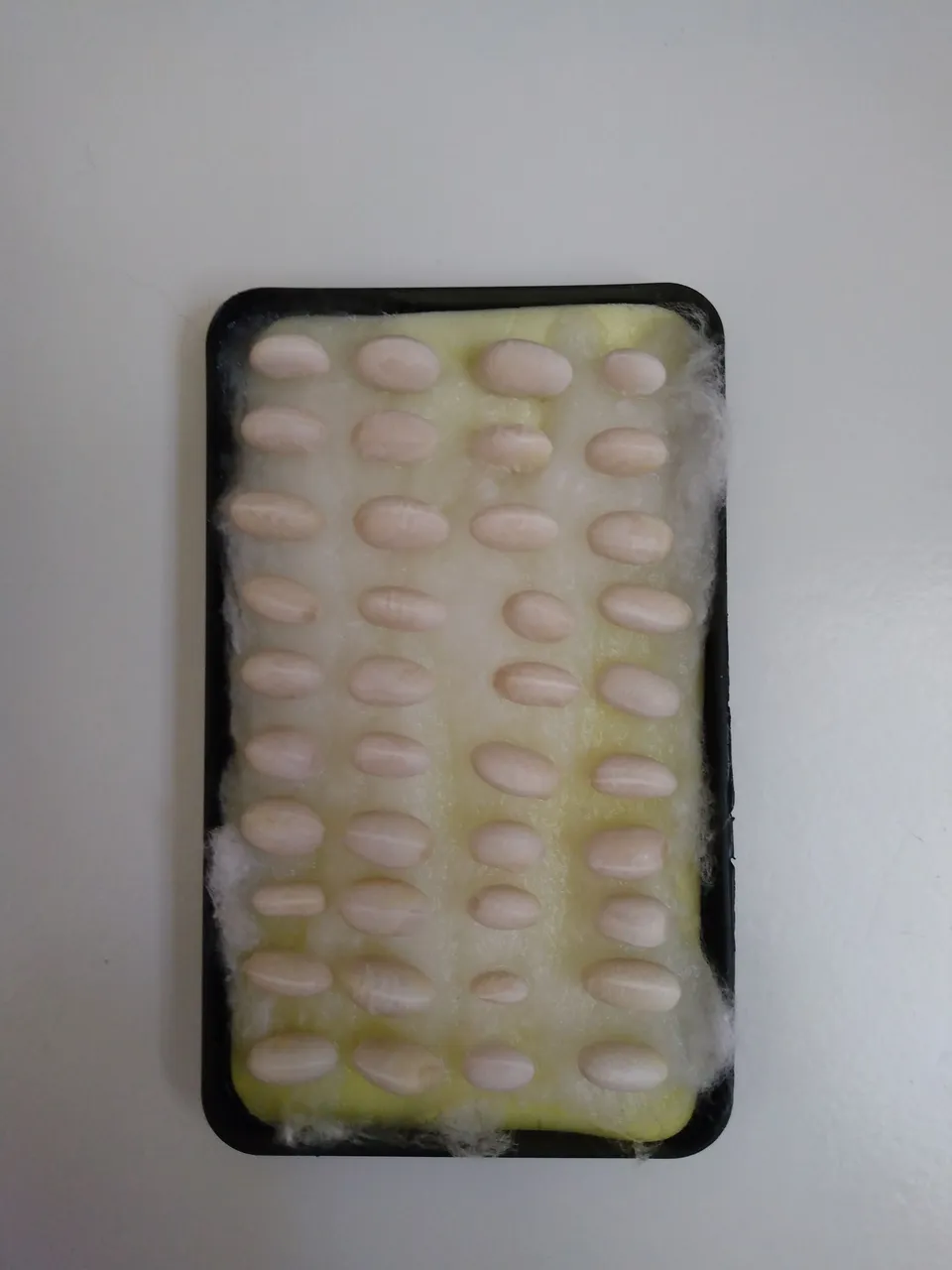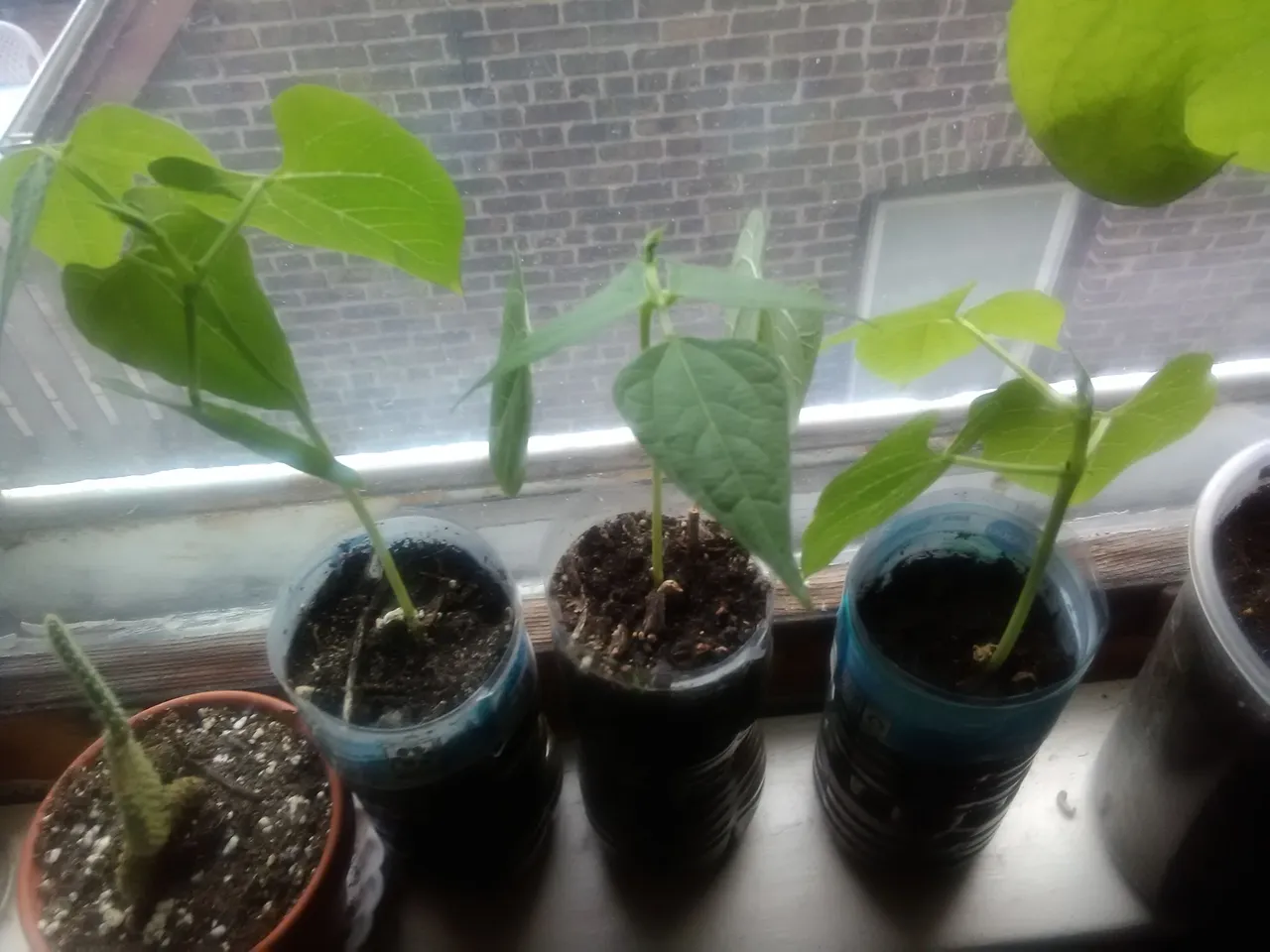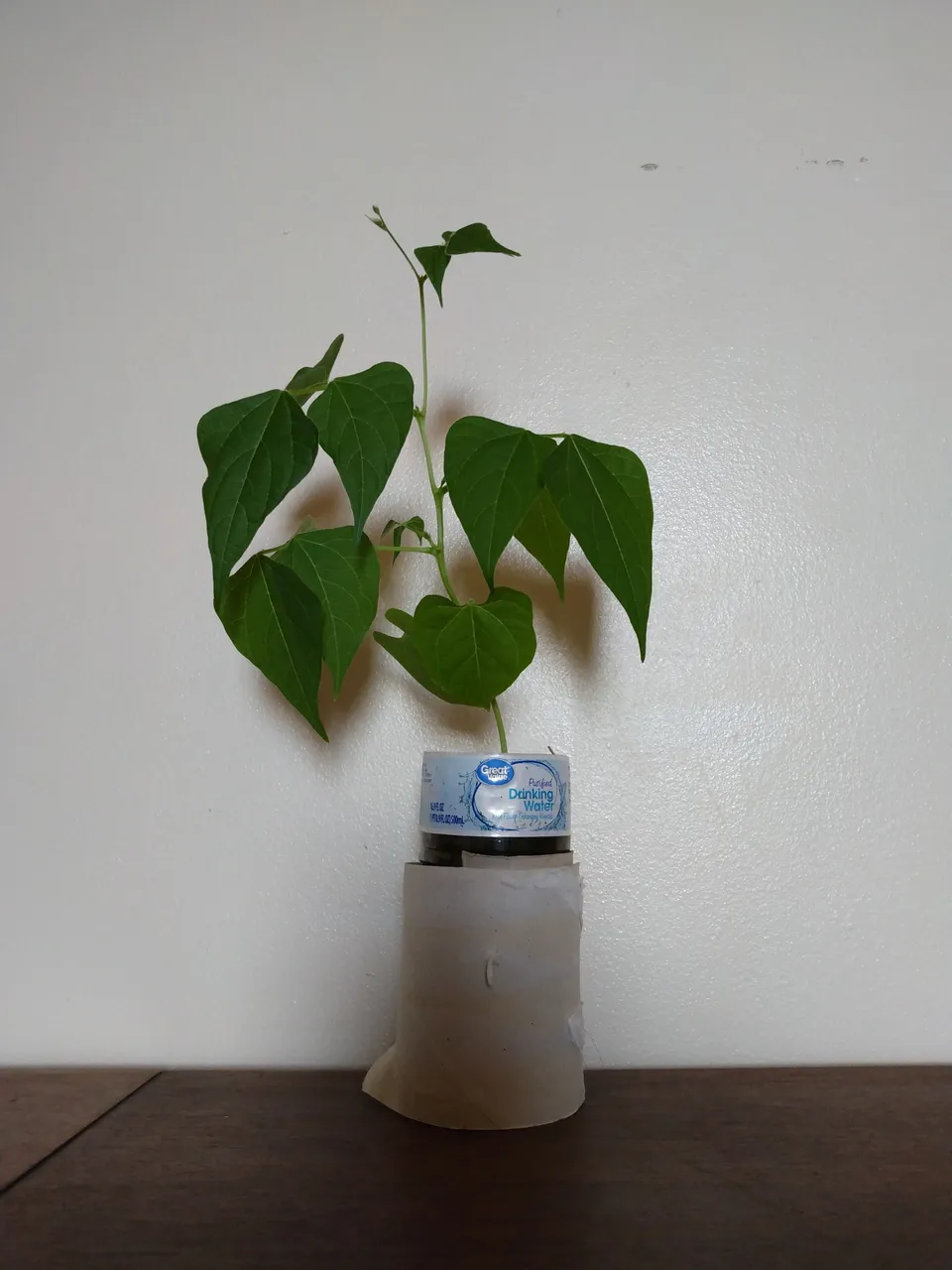
Greetings, lovers of plants, medicine, and health! I'm very excited about the latest bean in growing in my experiment.
For those who do not know, I have been working on an experiment for some time now, trying to induce mutations in a custom bean I've bred.
Background

The beans themselves are already mutants actually. They were originally pinto beans (the preferred variety in our home) that I simply got from the store. Many years ago, I threw a bunch of them in the garden and they thrived. When harvest time came though, the beans I hope weren't what I planted.
The new bean is now slightly smaller, more spherical and less kidney shaped, and most strikingly all white! It still has the growth habit of a pinto bean (half bush, half pole type) and tastes great! The plant seems to have shrunken a bit, being on the miniature side. The flowers are still white and the pods are just green.
Why choose a mutant to mutate?
Ideally, one might think it'd be better to start an experiment such as this with a base breed and not an experimental one. However, my mutant white pinto had some qualities that make it ideal. I mentioned it was small and this helps save space, especially when growing many plants. The small stature of my plants makes them suitable to grow in containers, so my experiments don't have to pause during the winter. I plant them in repurposed plastic water bottles with the tops cut off. In this confined space, they remain as bush-type and do not try to climb (and when planted outdoors they will happily climb).

The color white in nature is actually a lack of pigment. So these beans and flowers are effectively colorless. If a mutation manifests that affects pigmentation I think it would be easy to spot.
Methods
In order to induce mutation artificially, you need a mutagen. There are chemical and physical mutagens that can damage the DNA of the subject badly enough that repairs wouldn't be able to totally 'fix' the 'problem'. The damaged DNA is now different and in theory could result in new traits such as disease resistance, improved growth habit, or a different color pattern.
The mutagen I chose was Americium-241 dioxide, a radioactive isotope found in ionization type smoke detectors. It is plated onto a small button with the actual isotope amount washing less than a grain of sand. It is not dangerous (unless ingested) since the alpha particles it releases can't penetrate skin.
Here is where the entire experiment could possibly hit a wall. What if the particles never actually penetrate the bean and affect its DNA? There's no way of really knowing for sure
What I did was moisten the beans so that they began to germinate a little. And then exposed them to the source in a small glass container. Hopefully, the mild radiation will at least have been able to affect the DNA in the cells of the growing root tips. These beans were then dubbed M0 which stands for zero generations after mutagenesis; they are the irradiated parent type. The mutations are recessive and don't start to manifest until two generations later (M2).
This is the stage I am at in the experiment, screening for possible mutants. One plant looked promising as it started off a little deformed and had 3 cotyledons and 3 initial leaves as opposed to the normal 2 for both. However, this also occurred in a control bean (not irradiated) so I disregarded it.

Then came this plant. Look at it! It is growing like a pole-type bean wanting to climb. None of my white pinto beans have ever acted like this in a container. This bean might be a contender! I will be watching it closely and watering it frequently so that it does not get infested with spider mites.
If this plant does turn out to be something interesting, I will save the seeds (M3) which will be viable mutants.
Conclusion
This entire experiment is, well, experimental. I've never heard of anyone using Am-241 as a source for radiation breeding. For all I know, it may not even work. Maybe in the future, I will purchase a source that's known to work: Cobalt-60. This is a synthetic radioactive isotope of cobalt with a half-life of around 5 years, so it doesn't last as long. Am-241 has a half-life of about 432 years in comparison! Cobalt-60 releases gamma rays, which are highly penetrating so extra precautions would have to be taken with this substance.
This concludes my atomic bean update! I will post more developments as they come. Maybe, just maybe, we'll see red flowers!
Goodbye! Thanks for visiting!
